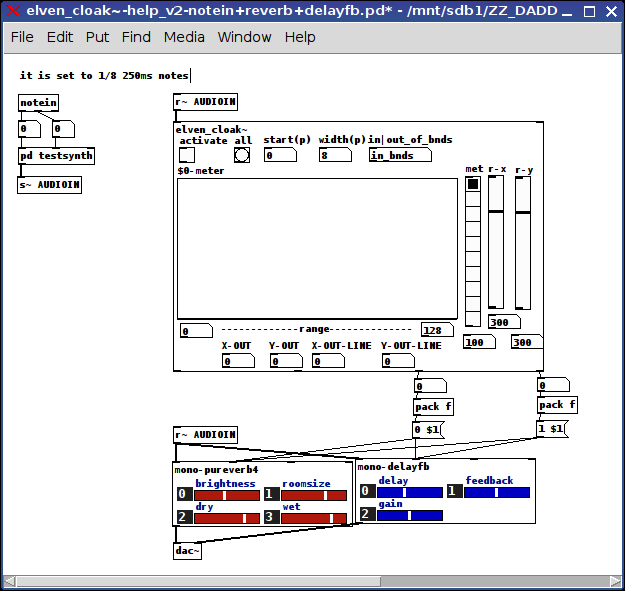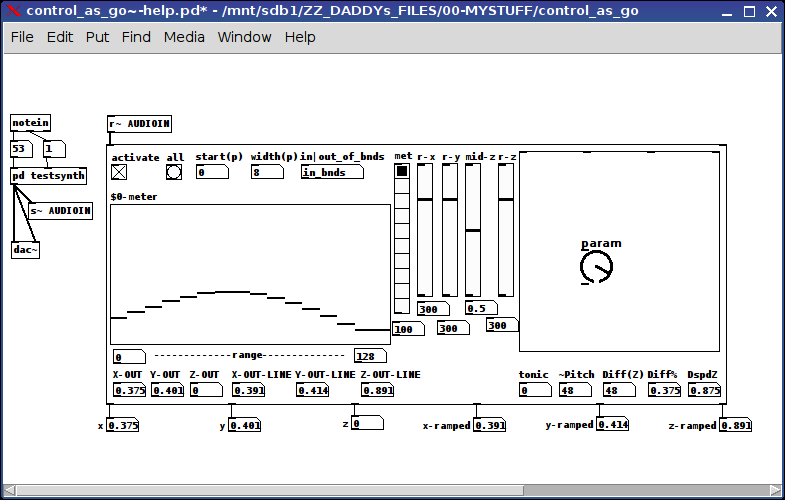This was just too funny to pass up!
note: I trimmed back on the example (because the one I had envisioned is not completed yet, or at least in good enough state to share) and am only including the DIY2 "mono_delayfb.pd" as am example. But really you can apply it where ever you have two available parameter slots and want your hi and lo pitches and amplitudes to control high and low values.
Essentially this is a re-purposing of an older abs I shared called 16-BandVU Meter.
However, in looking at it closer, I realized I could map the value of the max env~ to its band location on the meter, i.e. its band, to an x-coordinate and its amplitude, i.e. env~ to a y-value. So which ever "pitch" is highest dictates the x, and the value of that env~ dictates the y.
The result, for example, is if you play low and soft the two values/params are both low, and if you play hi and loud both parameter values are high.
My thinking is, which is why I chose delayfb (because those two parameters both have such dramatic effect) and called it "elven_cloak", one can map their playing onto their effects or vice-versa.
It has one inlet which takes a signal and passes out two outlets which are percent adjusted x,y values, i.e, between 0 and 1.
note: you Must include the "band_env~_sv.pd" abstraction in the same folder as the cloak.
Tally-Ho! And best wishes thru all of us.
Sincerely,
Scott
The parameters on the controller are:
activate: turns the meter on
all (reset all): ie. 16 bands of 8 pitches per
start(p): the starting pitch, i.e. 0-127, to monitor
width(p): the width in pitch of the band spread across 16 slots
in|out_of_bnds: a message telling you if the combination of start and width are in bounds in other words all between 0 and 127.
and
metro: how frequently (100ms*x) you want to calculate the xy-values.


